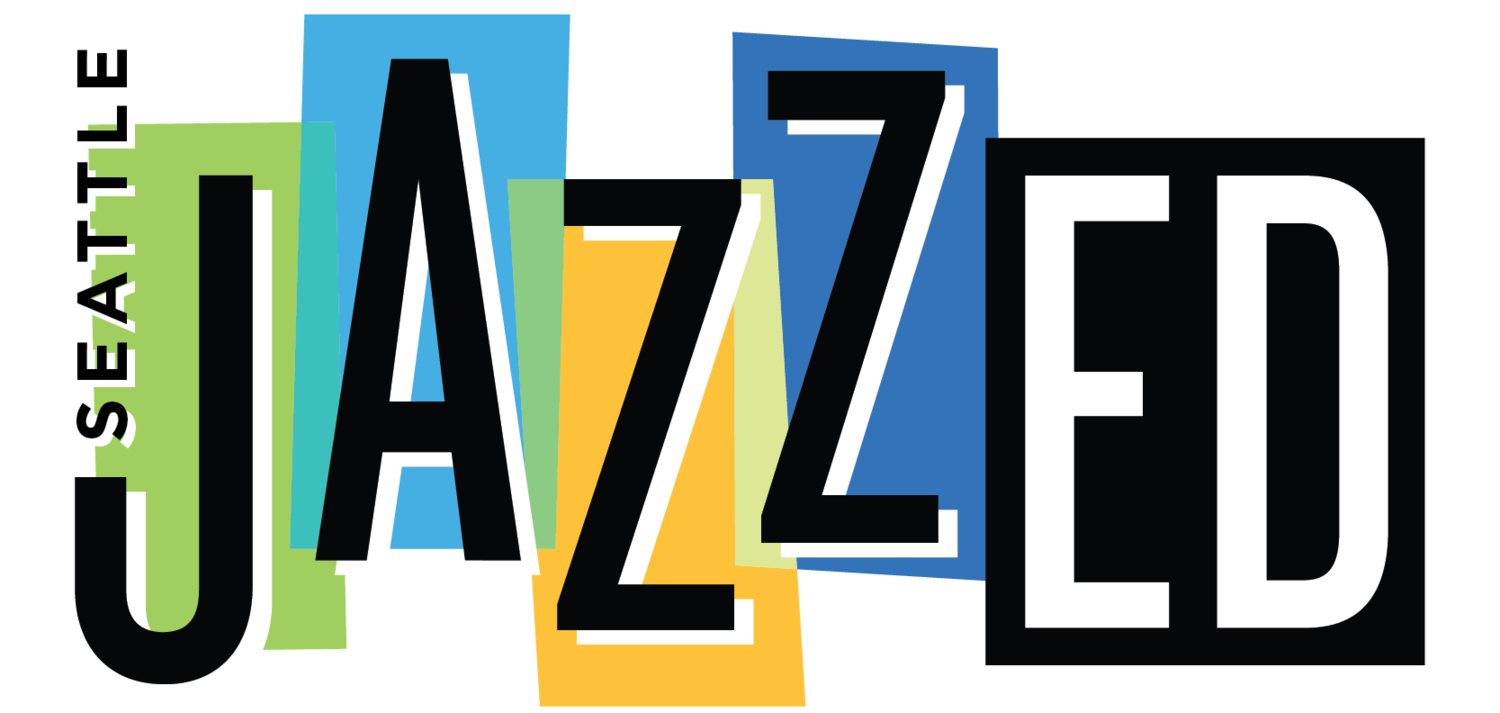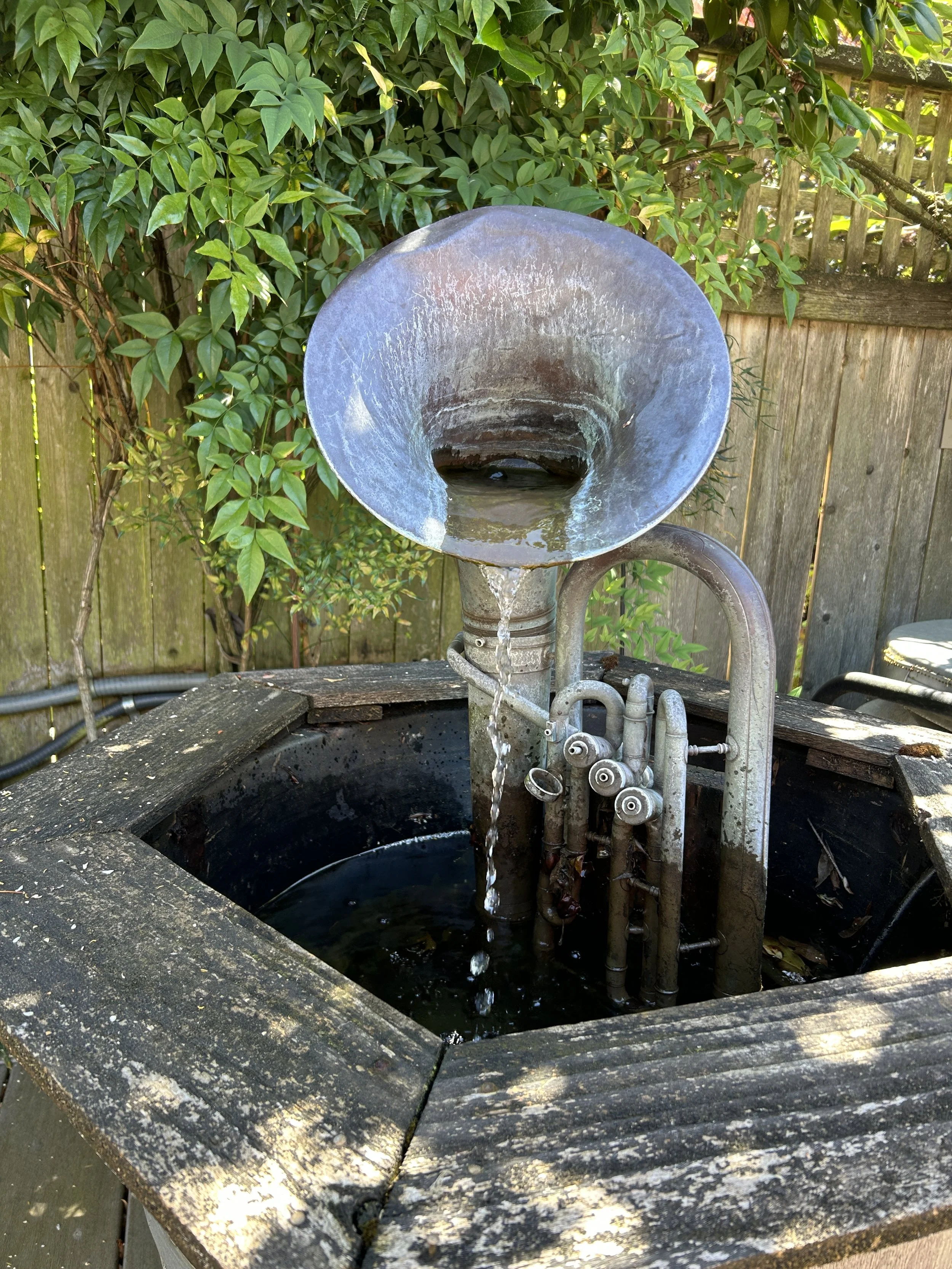Fountains Made of Trumpets? Meet the Donor Who Gives Music a Second Life
/At Seattle JazzED, everyone has a unique story to tell. And among our community members, donors are part of the lifeblood that keeps JazzED's story going.
We had the opportunity to speak with a monthly donor, Kim Krummeck, to learn more about his history with Seattle JazzED.
Kim calls himself a mechanic who adopts used instruments. Instead of restoring them for play, he gives them a second life and turns them into water fountains. Trumpets, saxophones, and clarinets that can no longer be played are reimagined and reengineered to flow with water. And with every fountain he sells, Kim donates $50 back to Seattle JazzED.
Keep reading to find out more about these innovative fountains and Kim’s story!
Kim got inspiration for his fountains from a similar one he saw in New Orleans, and evidently, ran with this idea. He repurposes instruments that are too damaged to be played and installs them with water pumps and tubes. He can build one at a surprising speed and has created dozens of fountains over the years.
Born in Seattle, Kim's musical journey began in the sixth grade when he spotted the horn and told his dad he was interested in learning it. He took Kim to a band instructor from Franklin High who hammered on him that practicing an instrument requires lots of time and dedication, ultimately talking Kim out of it. He says this missed opportunity was a huge regret. This moment is why he's passionate about supporting kids in their musical pursuits.
Kim interest in jazz continued to grow. He attended Garfield High School, home to one of Seattle’s legendary jazz programs, which was founded and directed by Clarence Acox. While Kim didn't attend Garfield during Acox's time, his sister participated in Acox’s band.
Through his sister’s connection, Kim eventually met Acox personally and says it was one of the driving reasons that he became interested in jazz music. It also connected him to Seattle JazzED, as Acox also co-founded this organization.
Years later, while fulfilling a college requirement, Kim took a jazz history course taught by Byron Pope, a local jazz musician. His love for jazz was further fueled by annual travels to New Orleans, where he experienced the rich roots of the Second Line tradition firsthand.
These experiences shaped Kim’s appreciation for the culture and community of jazz.
Here at Seattle JazzED, jazz music isn't about playing to perfection. It’s about preserving the joy and artistry of jazz music. Kim understands that music is such a difficult pursuit on a professional level, but whether or not a student becomes the next Clarence Acox, he believes everyone deserves a chance to learn and enjoy jazz music for what it is.
When Kim became involved with JazzED, he hoped to support the next generation of musicians. What drew him in was our mission to make jazz education accessible to young people. He also loves providing kids with the opportunity and freedom to learn music, particularly because it was a chance he had never had.
When asked what he would say to others about supporting their communities, Kim didn’t hesitate to say, "Do it!" He emphasized the need to step up— suggesting that if the baseline is the amount of support we now give to youth, we should rise above it. He encourages us all to "step up" in assisting our youth.
And for art programs specifically, Kim pointed out that "eliminations of music and sports programs are the first to happen" in schools. That’s why stepping up will become increasingly important in keeping art alive. Kim encourages us all to step up in our communities, even if that means just helping out a friend. We all have a role to play.
Kim Krummeck in his workshop working on a new fountain
Today, Kim lives with his wife Susan and his dog Lena, named after Lena Horne. He is a Vietnam-era veteran, an artist, and a donor whose creativity continues to support our work.
To Kim, and to all of our donors, thank you for supporting Seattle JazzED!
And to those interested in purchasing a fountain, please reach out to us via email at info@seattlejazzed.org for more information!
Interview and article written by Seattle JazzED Summer Intern, Denise Chang












